“A TURNIP CURES ELVIS” begins the opening credits, an intriguing beginning to a smart and still timely film that was released around 25 years ago. If you’ve never seen the movie, I’m about to spoil the hell out of it.
Sneakers features the title characters, hackers who work the 1992 gig economy as freelance penetration testers. They work for Martin Bishop, a hippie hacker Obi Wan who works San Francisco’s gray market, doing good deeds and helping banks improve their security.
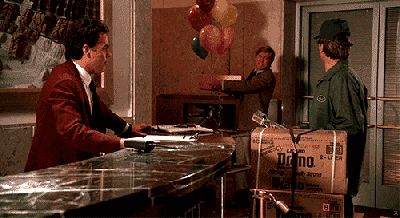 While there is a fair amount of cheese in Sneakers, a lot of the problems the characters face — physical security and cryptography come to mind — remain the problems of today. Securing our digital business? Check. Surveillance? Check? Gray operators? Absolutely. At the same time, the movie does a good job of exploring different categories of hacker. The various characters seem to offer glimpses of people I see all the time at the hackerspace. Bigger than life, certainly, but they are in a Hollywood movie, after all.
While there is a fair amount of cheese in Sneakers, a lot of the problems the characters face — physical security and cryptography come to mind — remain the problems of today. Securing our digital business? Check. Surveillance? Check? Gray operators? Absolutely. At the same time, the movie does a good job of exploring different categories of hacker. The various characters seem to offer glimpses of people I see all the time at the hackerspace. Bigger than life, certainly, but they are in a Hollywood movie, after all.
Finally, the movie is just smart. Those opening credits offer a preview: the anagrams that begin the movie (“A TURNIP KILLS ELVIS” translates to Universal Pictures) are not just some art director’s conceit for the opening credits. The anagrams end up being important later on in the film, where there is a key clue hidden but if you think about it, shuffling letters on your Scrabble tray could be taken as a metaphor for hacker thinking — taking the same information as everyone else but looking at it in a different way.
The Beginning
The movie begins with Martin Brice and his friend Cosmo hanging out in their dorm room hacking the Republican National Committee and illicitly donating their funds to the Black Panthers. It is 1969 and the guys pack a decade-early PC featuring inexplicably anachronistic 40-column text as they do battle against the squares on an as-yet-unimagined Internet. They’re hippie hackers, man.
In a fateful turn of events, Cosmo is busted while Brice, saved due to making a noms run, flees to Canada. Fast forward to the littering future of 1992 and the Sneakers are pen-testing a bank. They have that joint owned from top to bottom, and break in to add money to an account they plan on closing the next day.
Martin Brice has grown up into Martin Bishop, who comes across very much like Robert Redford playing a hacker. But it works. Martin is a man of action who relies on his crew for specialist knowledge but is content to do most of the dangerous stuff himself. Backing him up is a lovable cast of hacker subclasses, including conspiracy-theorist and AV nerd Mother, played by Dan Aykroyd who basically re-channels Ray Stantz from Ghostbusters to good effect. Sidney Poitier plays himself, if Sidney Poitier were an ex-Company security expert. He’s the least exciting person in the group but has an encyclopedic knowledge of security hardware, and can rock a spec sheet like no one else.
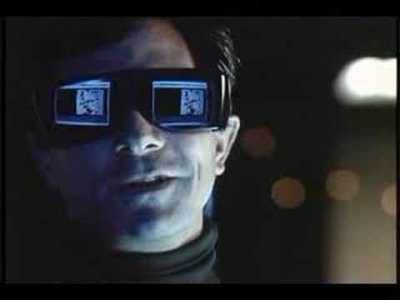 Supreme audio ninja Whistler steals the show. There have been so many blind mystics in movies it’s easy to think that he’s just a recycled character. But the fact is that Whistler is pretty much lifted out of the annals of hacker lore. I’m not saying the real Joybubbles could identify a fire exit by the sound of the alarm batteries recharging, but it’s damned plausible. The fact that Whistler is tricked out with an interactive Braille display with the dots actuating in realtime doesn’t hurt. He’s kind of a deus ex machina character, but the real Joybubbles invented the 2600 Hz hack and paid for a vacation to read Mister Rodgers’ Neighborhood scripts by sniffing pig manure. In the movie Whistler’s skills are constantly helping out Bishop, but he’s based on a guy who really did have amazing skills.
Supreme audio ninja Whistler steals the show. There have been so many blind mystics in movies it’s easy to think that he’s just a recycled character. But the fact is that Whistler is pretty much lifted out of the annals of hacker lore. I’m not saying the real Joybubbles could identify a fire exit by the sound of the alarm batteries recharging, but it’s damned plausible. The fact that Whistler is tricked out with an interactive Braille display with the dots actuating in realtime doesn’t hurt. He’s kind of a deus ex machina character, but the real Joybubbles invented the 2600 Hz hack and paid for a vacation to read Mister Rodgers’ Neighborhood scripts by sniffing pig manure. In the movie Whistler’s skills are constantly helping out Bishop, but he’s based on a guy who really did have amazing skills.
At the end of the pen test Bishop shares with the bank’s board how sucktastic their security seems to be, and dutifully returns the $100K the Sneakers purloined in their fake heist. Yet their honorarium is so lame that the bank’s secretary makes a scornful comment. Such is the weighty responsibility of a white hat hacker, imbued with the level 20 myrmidon skills that would beggar those skinflint bankers, yet forbidden by their code of honor to misuse their very same skills.
But then the evil suits arrive and everyone’s short-lived relief at the successful bank job is subsumed by the possibility of making more dough working for the suits.
Introducing Liz
I’m not sure how Liz gets her money. She has a hollywoodesque apartment in rich-people San Francisco and has a job giving music lessons, while attending lectures on advanced number theory. I’m thinking she has some killer patents she’s sitting on.

This movie was in fact put out in 1992 and there are agency problems with Liz. She mostly is there to get in danger and for Bishop to impress so she’ll go out with him. There’s another woman character with lines, but she’s someone else’s love interest. You can pretty much forget about the Bechtel test. Bishop is always interrupting her and she spends a lot of the movie looking exasperated that the Sneakers have spread their equipment over every horizontal purpose of her apartment. In this respect this is a true and accurate side effect of having hacker friends. Liz comes into her own when she plays the role of social engineering expert in taking down hapless nerd, Werner Brandes. An evil toy designer for EvilCo, Brandes inflicts his tepid game on Liz while she gets him to speak all the words of the password to get into secured office. Later on in the movie she grabs a pistol off the floor and shoots a warning shot into the ceiling tiles. Now, that’s more like it — a little more Jackie Brown, you might say.
Details, Details
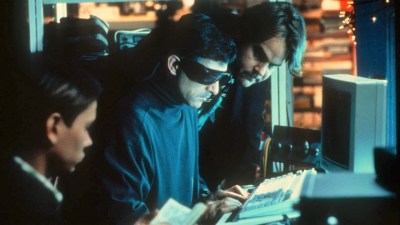 It is true that Sneakers contains a number of elements that may have been fresh in 1992 but certainly aren’t now. Climbing through air vents and slapping on security-penetrating dongles with red LEDs on them may once have been sweet but has lost its punch. The computer displays are laughable by today’s standards, with the Macintosh System 7 chrome not maintaining the cool factor over the years. The “heist” elements have been done and redone for decades.
It is true that Sneakers contains a number of elements that may have been fresh in 1992 but certainly aren’t now. Climbing through air vents and slapping on security-penetrating dongles with red LEDs on them may once have been sweet but has lost its punch. The computer displays are laughable by today’s standards, with the Macintosh System 7 chrome not maintaining the cool factor over the years. The “heist” elements have been done and redone for decades.
However, hacking isn’t about your screen resolution or even having a screen. Some of the best techniques over the years don’t involve any technology at all, and we get to see them in the movie. When Bishop social engineers his way past the a security gate by pretending to be in a hurry, he doesn’t need anything but a harried guard and bunch of balloons to sneak through. The fact that he can pass as a suit doesn’t hurt.
The signature scene in the movie involves a reveal when we find out what Setec Astronomy stands for. The scrabble reveal is one of the best scenes in cinematic history — Bishop and Liz ply their right brains to descramble Scrabble tiles while Mother, Whistler, and River Phoenix connect the thing to the Internet and work their left brains — they arrive at the “we’re in over our heads” moment at the same time.
More than anything, the movie celebrates lateral thinking, solving problems by coming at them from an unexpected direction. When Bishop encounters a lock he hadn’t anticipated, rather than try to hack it they have Bishop simply kick it down. In another brilliant scene, Whistler helps Bishop remember how to get to EvilCo by playing the sounds of his trip, with Whistler working a sick Braille interface on his Moog and sequencer to help re-create road sounds.
The movie mostly gets these small and large details right. It’s a celebration of hacker thinking, of people who make society better while maintaining enough of a separation to keep that outsider’s mindset.
White Hat vs. Black Hat
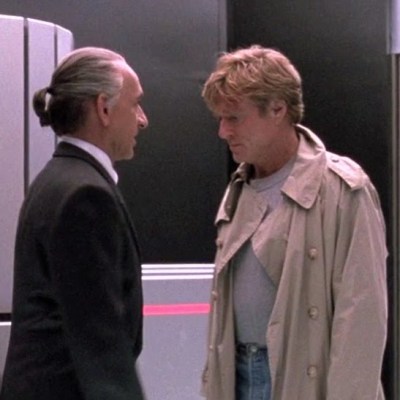 The movie did its homework. First off, the main writers were the guys from WarGames, which is another hacker movie that got a lot of details right. According to Wikipedia, cryptologist Leonard Adleman (The “A” in RSA) was a consultant for the film and composed all of the slides in Janos’s cryptography preso in Palo Alto. Sometimes in a movie — hell, a lot of the time — the technobabble is fake. Those of us who grew up in the ’80s and ’90s recall frantic engineers rerouting the plasma injector through the phase variance field to save the day. So for the filmmakers to actually study mathematics and cryptography enough to hire an expert in the field, well, that’s pretty cool.
The movie did its homework. First off, the main writers were the guys from WarGames, which is another hacker movie that got a lot of details right. According to Wikipedia, cryptologist Leonard Adleman (The “A” in RSA) was a consultant for the film and composed all of the slides in Janos’s cryptography preso in Palo Alto. Sometimes in a movie — hell, a lot of the time — the technobabble is fake. Those of us who grew up in the ’80s and ’90s recall frantic engineers rerouting the plasma injector through the phase variance field to save the day. So for the filmmakers to actually study mathematics and cryptography enough to hire an expert in the field, well, that’s pretty cool.
But I think what this movie does really well is shows the hackers in all their complexity. You have stiff-ass Werner Brandes, the guy who folds his trash and has a PhD in robotics. There’s kooky surveillance guy and comic relief Mother, played by Dan Aykroyd. I met a lot of people at the hackerspace who are only somewhat able to interact with society. The space is almost a buffer against normal people. I see Mother’s brilliance and kookiness in a lot of those folks.
Evil Cosmo and saintly Bishop are another pairing — they illustrate the two paths of evil and good, at least in Bishop’s worldview. The evil hacker Cosmo follows the path of lucre and power-grubbing and becomes a puppet of organized crime. Bishop uses his knowledge to help society, backed up by his crew of brilliant misfit hackers. They don’t want anything — nothing really, random stuff. Mother wants a Winnebago. But they certainly don’t want the power and the attention it attracts.
In the end, of course, they don’t really turn the Ark over to Warehouse 13, either. Bishop hoodwinks the NSA by keeping the thing, or at least the main IC of the thing, so that he can re-engineer the full on thing and use his newfound powers to right wrongs and only hurt people he felt deserved it. The pat Hollywood ending isn’t really important compared to the fantastic characters and great dialog of the movie’s hackers.

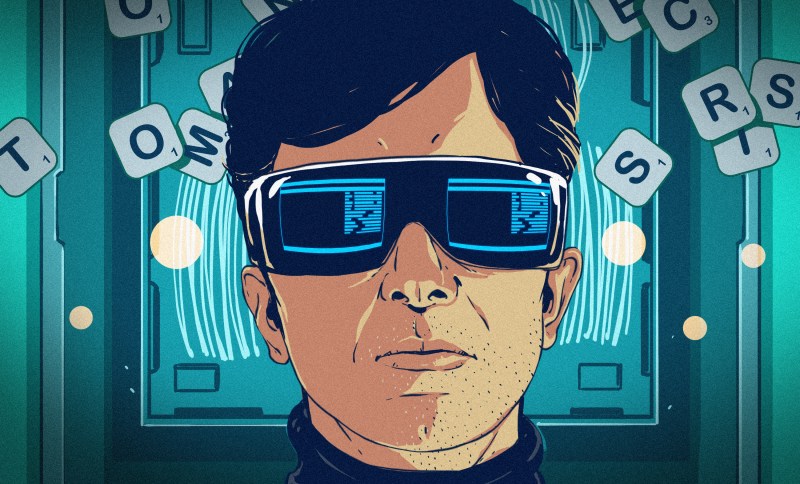














“A TURNIP KILLS ELVIS” translates to Universal Pictures
No. No, it really doesn’t. BUT! “A TURNIP CURES ELVIS” does, which is the actual anagram “Sneakers” kicks off with. You gush over the movie makers doing their homework, but clearly you couldn’t be bothered to cue up the movie and hit [Pause] a couple seconds after [Play]. I mean, just count the Ls, man!
You win the prize!
Is the prize COOTYS RAT SEMEN?
you mean the fabled Acme Noose Tryst? We can only hope…
Thanks for the love!
How else was he going to record you saying “cures”?
Ha ha ha. You made my morning :)
Love the film, love this article. Love that originally it had an error in it (2600Mhz?! that’s a hell of a frequency to whistle at, now corrected to 2600Hz) that was corrected before I had a chance to report it.
someone else got there first!
You’re not a real hacker unless you can whistle in the microwave band.
Real hackers heat their mess of nacho porridge soup by whistling microwaves at their “food”.
Now I’ve got Kernkraft – zombie nation stuck in my head after posting that.
piss off.
I love how HaD fixed the first quote and still left the second one wrong, good job guys!
Which is the biggest problem here. John Baichtal is shitting on others for not paying attention to details, or not knowing “hacking history,” but he equates Whistler as as a proxy for “Joybubbles.”
It was made abundantly clear that Whistler was based on John Draper, because Draper used a toy whistle found in Cap’n Crunch cereal boxes to make free phone calls when the phone system was tone-based. This was covered extensively in all the behind-the-scenes specials, and Robinson, Parkes, and Lasker specifically mentioned that they based Whistler on Draper, because he used a whistle.
Draper is Phreaking 101; you can’t pretend to understand the history of hacking, or call out movie mistakes for featuring either, if you don’t even know such basic history.
Just further proof that “hacker insiders” don’t actually know what they’re talking about.
Can´t wait for the new HaD categories “Celebrities”, “Horoscope” and “Sports” …
Nerd Classified to help lonely geeks and nerds find an opposite that has a clue about what they’re saying.
No, better yet: Missed Connections
Cha, missed connections are easy if you have a wireless repeater or some electrician’s tape lying around
This is still one of my favorite movies of all time. Even Ron Popei wrote in his book how proud he was that the movie used his famous Pocket Fisherman in a scene to help defeat security devices at the evil corp. A very well written and produced film.
^^, Ron Popeil.
Its pronounce potpurri.
Yes, my “l” did not make it to the screen for some reason…I don’t think there is any way to edit here is there?
My issue with that hack was that they were using it to confirm that there was, indeed, a dead zone of the IR motion detection coverage in the corner where they can jump down without tripping it. The entire rest of the “sneak” was predicated on their being able to get into Cosmo’s office to get the McGuffin, and THAT was predicated on the dead zone. If they had found there was no dead zone, there was no backup plan. They would have confirmed the dead zone well ahead of zero hour, not in the middle of the sneak.
But, isn’t there ALWAYS a “dead zone” in the corners with ultrasonic sound waves? Sidney’s character probably knew this from his days at the CIA. Of course, a short scene with him telling this to the fellows would have been better.
Motion detectors kinda suck. Even without the dead zone, simply moving slowly enough would have worked. (no need to heat the office) Something they would have known. Then there is the fact of the nature of these devices being simple serial (RS232) interfaces that are relatively easy to bypass. Often not much more than keeping the signalling voltage from an external source like a coin cell before cutting the wire.
Pheonix’s character was positioned near where the serial matrices for these sensors would have been installed anyway. Those aren’t exactly highly advanced, biometrically secured hardware either.
They would have had plenty of options available even without the dead zone.
RS232 Protocol spec used by one such vendor: http://www.skf.com/binary/tcm:12-28531/RS232%20operating%20manual.pdf
” Climbing through air vents and slapping on security-penetrating dongles with red LEDs on them may once have been sweet but has lost its punch. ”
Enough of a trope to build a video-game franchise (Sam Fisher) around.
Solid Snake did it firstt on the MSX
When they go through the guy’s garbage, there’s a Captain Crunch bit, a bit of detail that only some would realize.
I recall this was Sidney Poitier’s return to acting, having been behind the camera for some time, so I like his role. He is way more mainstream than the others, but that is his role in the company, a certain respectability.
It probably does hold up better than some. “The Net” is still worth watching because of Sandra Bullock, but it feels like 1995, when suddenly a lot of things went mainstream. “Hackers” is fun, but it’s a teen film, maybe especially that scene where they drool over someone’s new laptop, except in drooling over the specs they date the movie badly.
I haven’t seen “Wargames” since a year or two after it came out. I still haven’t got it on DVD, unlike the other movies.
Michael
Way more mainstream than Robert Redford? Or Dan Ackroyd? Are…are…you serious?
“The Net” is still worth watching”
Oh no…. It’s retarded.
In all seriousness, is there more of a clue/easter egg in the titles than I realized beyond “letters being scrambled”? Do they relate to or reference something other than the little box’s abilities?
One of my favorite movie quotes is from Hackers. “Its in that place where I put that thing that time.” I still use that line from time to time.
Liz: [He’s] looking for someone sophisticated… refined… anal.
[everyone looks at Liz]
Liz: Whaaaat?
P6 chip–twice the speed of the Pentium!
Well yah, Pentium Pro had dual execution pipelines and was released at higher speeds than the P54 pentiums had been shipped at up until then. Most ppl were still buying entry level Pentium 75s.
Was that a homage to John Draper? (Captain Crunch) He is the one who discovered the whistle given away in Captain Crunch cereal would emit the 2600 hz tone needed to make free phone calls. If so, I must say I never noticed that detail…I will look for it next time I see it.
One of my most favorite movies ever… good stuff and almost timeless. Well done, [HaD], for featuring it!
I gotta say it:
I love the movie, but since when is a movie review a “hack”? Maybe you should change the site name to “Daily Ramble.”
I’m good with that; just don’t misrepresent yourselves.
It’s an article showing appreciation for a movie that mostly gets hacker culture right. Stop being such a literalist.
@seasoned Engineer — Stop being such such prick. @sgt sandbox:FTFY.
I have to agree with Sgt Sandbox. Besides, this has been covered before (in the distant past) — as I recall, the official answer was, one actual hack per day fulfills the promise in the name of the site.
Since the movie itself contains several /actual hacks/ (this is actually not a comment about the acting, which is superb) — perhaps you should go watch it again, instead of whining on here about how your idea of what this site should be is not being met… or maybe you want to go make your own Hackaday-like website and start some friendly competition? I promise you, I’ve thought about that once or twice myself — and every time decided that it’s not worth the temporal investment, despite the fact that I’m unemployed and on Disability and as such have almost literally all the time in the world. This stuff is hard work and you should not be dinging it. If it genuinely doesn’t meet your expectations (which I suspect are too high to begin with) with a frequency that genuinely causes you bother — go find another blog or website. There’s plenty of them out there.
But, above all — don’t just sit there and whine, that only makes people irritated. If you’re ticked, go out and /do something constructive with it/.
> Whistler working a sick Braille interface on his Moog and sequencer to help re-create road sounds.
Roland, and (Seuqential Prophet) sampler.
I mean the author basically clearly didn’t watch the film very carefully or closely. There’s numerous mistakes and signs they sort of had it on in the background.
A wizard did it.
Thank you for caring enough to send a low-voltage zinger my way.
Part of what makes this film this film is the details…
> The evil hacker Cosmo follows the path of lucre and power-grubbing and becomes a puppet of organized crime.
No? You seem to have entirely missed Cosmo’s motivation, the complexities of said character, etc. Hint: the screenplay is well-written enough there are morally ambiguous characters (for example, most of the team are criminals.) Even the henchmen get a bit of backstory and aren’t just simple henchmen – Buddy Wallace isn’t “just” evil – as Gregor puts it, “a sad and lonely man.”
Cosmo isn’t interested in “power grubbing.” Jesus, did you actually watch the movie? It’s not like there are at least three major scenes about this that oh by the way are the crux of the movie. The intro scene alone shows us Cosmo’s wild-eyed, 1970’s hippy egalitarian idealism and lends credence to his claims later.
Getting The Box isn’t about power – and in fact, his usage of the box is extremely limited in the movie. He’s apologetic about Martin being hurt, pleads with him to surrender in what’s probably one of the more genuine give-yourself-up scenes I’ve ever seen…and on the rooftop, we see him to be deeply conflicted about using force on his friend, and ultimately: lonely. He wants Martin’s companionship in making his plans happen, as much as he wants the box.
Lastly: put down your goddamn Ada Initiative Approved Bechdel Test Checklist (for fucks sakes, you didn’t even spell it correctly) and actually WATCH THE MOVIE. “Liz” can afford her apartment because she teaches music at what is very clearly a high end private school, and this was set in the very early 1990’s, way before the massive housing price boom. She’s portrayed as very well educated, confident, happy, and successful. And she sets strong boundaries, which, I might add, are respected. Remember when he shows up at her door after getting thugged? There’s nothing romantic in that scene. She’s scared and worried for him, but not “because I wuv you!” but because he remain someone she knows really well, doesn’t want to see harm come to, etc. I don’t remember exactly if in the very last scenes there’s any hints of them “getting back together”, but i’m fairly sure in the movie nothing more than a strong friendship comes about.
I love your passion!
Cosmo: [puts gun down and sighs] I cannot shoot my friend.
Martin: [looks relieved]
Cosmo: [turns to henchman] Shoot my friend.
You can pedant your was around it all you want, but Cosmo was inherently after power. The ability to control, bankrupt everyone, make things in his image, that’s definitively power, even if its ‘to make everyone better off’.
There’s a DISTINCT Marxist tinge to their entire line of thinking, and yet what happens when people use those excuses to wrest power for themselves? 100 million body count blood baths, that’s what happens.
Destroying the infrastructure by wiping out everyone’s savings wouldn’t help anyone, it make countries collapse and without economy people can’t feed themselves, chaos in the streets, cats and dogs living together, mass hysteria, etc.
The problem is that you’re both right. He was at once a complicated character and had his reasons, but his vector was still in the direction of ‘getting power and using it on everyone’.
What do Corporations, organised crime, governments and marxism have in common?
Hint: The answers are in the question.
I missed it in the theater. (Don’t ask!?) However, I rented it on VHS, and played it for the two gentleman I shared an apartment with. One of them all but refused to believe that most of the technology there was for real.
It wasn’t until the bulk of my computer gear arrived from storage that he changed his mind.
Fun movie. I found Wargames to be just as interesting.
“Be a Beacon?!..L
I remember watching this in the 90’s either in the theater or as soon as it made it to VHS. The scene that has stuck with me over the years, and I think is one of the least dated aspects of the movie, is the Cosmo (Ben Kingsley) line on the roof with Bishop (Redford):
“There’s a war out there, old friend. A world war. And it’s not about who’s got the most bullets. It’s about who controls the information. What we see and hear, how we work, what we think… it’s all about the information!”
I remember really wanting to see it when it came out but I had agreed to babysit so my mom could go see it. When she came home from the movie she went straight for the bathroom and threw up from anxiety. At the time she said it was the suspense, but I didn’t really get it until many years later that what made that suspense and anxiety that real to her was the fact that she saw in those guys me and my friends, a pack of young [sometimes reckless] idealistic geeks with a strong hacker spirit and 2048 bit RSA keys doing things that ohh get us in over our heads just for adventure.
Also, having been a radical in her youth and haing been staked out and harrassed by surveillance goons for her involvement in various civil disobedience actions I expect that aspect of the movie also hot home. In any case, as soon as it came out on video I watched it and it took it’s place with Wargames in my short list of geek movies where the geeks are sympathetic characters rather than mere parodies.
A movie quote that made a big impact on me was by Dennis Hopper to Keifer Sutherland at the end of the movie “Flashback”…
It went something like, “the Nineties are coming, and they’re going to make the Sixties look like the Fifties!”
So true…
Which other hacker movies are there? There’s mention of Wargames, Hackers and The Net. I quite liked Blackhat and Zer0 days more recently. Which others?
Die Hard 4 ;-)
Oh gawd! I still can’t get the association with the term “fire sale” out of my head because of that crap. Justin Long needs to go back to saying “Hi, I’m a Mac.”
I’m not so sure the basic premise of “No More Secrets” wouldn’t be a Good thing. Governments couldn’t hide anything so the playing field would be more level. Could possibly stop the the “bad doers” before they could do bad. Just sayin’
No more secrets? Have you published your med records, financial data or browsing history lately?
Cosmo: [puts gun down and sighs] I cannot shoot my friend.
Martin: [looks relieved]
Cosmo: [turns to henchman] Shoot my friend.
http://www.vinpearl-dalat.com.vn/
Motion detectors kinda suck. Even without the dead zone, simply moving slowly enough would have worked. (no need to heat the office) Something they would have known.